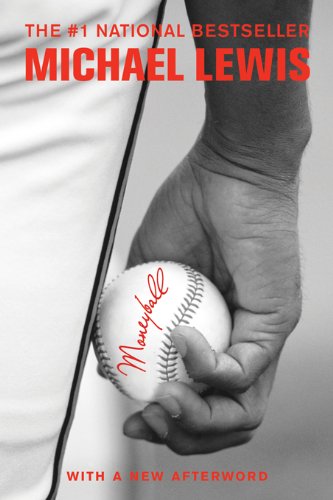

This article is an excerpt from the Shortform summary of "Moneyball" by Michael Lewis. Shortform has the world's best summaries of books you should be reading.
Like this article? Sign up for a free trial here .
Who are the Moneyball characters? What did they do?
Between baseball players and front office executives, there are many Moneyball characters who appear throughout the book. Here are 6 Moneyball characters and their contributions to baseball (and the true narrative).
The Advocates and Critics of Sabermetrics
All of the Moneyball characters were involved in baseball. But some, like Billy Beane, were involved at the management level, or were baseball insiders. The main Moneyball characters are either advocates or critics of Sabermetrics.
1. Billy Beane
By far one of the most important Moneyball characters is Billy Beane. Billy has a middling MLB career throughout the 1980s, in the course of which he is traded from the Mets to the Minnesota Twins to the Detroit Tigers, and finally, to the Oakland A’s. In 1990, he accepts his status as a draft bust, retiring as a player that spring. After walking off the field, he takes a job with the team’s front office, in the lowly position of an advance scout, a shocking move for a former blue-chip baseball prospect.
As a scout, and eventually as GM, Billy will butt heads with the men who make up the scouting department. Scouting is the stronghold of baseball conventional wisdom, of men who believe that they can predict a player’s future success in the majors simply by observing with their own eyes how well they can hit a ball, throw a pitch, or steal a base, even if they only see that player play a handful of times. To Billy, these are the same men whose preference for subjective wishful thinking over objective analysis had raised his expectations, waved away his obvious psychological flaws, and set him on a path to failure.
As a scout, Billy is determined to never repeat their mistakes. He learns from both their failure and his own. He looks for players whose statistical performances indicate a likelihood of success in the major leagues. He is determined to never draft the next Billy Beane.
2. Paul DePodesta
Another one of the important Moneyball characters is Paul DePodesta. By the 2002 Major League Baseball Draft, Billy has assembled a sabermetric-focused team in the front office, including assistant GM Paul DePodesta, who had graduated from Harvard with a degree in economics and never played professional baseball himself.
Paul is able to calculate exactly how many runs any player is worth. In a dysfunctional and irrational market for baseball players, expected run value becomes the gold standard for the A’s, a tool that enables them to more accurately price the assets in any given trade. This knowledge gives the A’s an edge in player trades with other teams, enabling them to receive far more value than what they give up, while saving money. The rest of the league is making these vital franchise decisions on instinct and subjective reasoning; the A’s are using a formula that enables them to far more accurately gauge the value of their players.
3. Joe Morgan
Joe Morgan is a baseball commentator who is strongly and openly against Sabermetrics. Sabermetrics are a major point of contention between the A’s and the baseball traditionalists, particularly television and radio commentators like former player Joe Morgan. Morgan argues that teams must “manufacture runs” to achieve success in the playoffs, i.e., trade outs for runs through stealing bases and hitting sacrifice flies and bunts. Billy thinks this argument betrays a deep ignorance of the game. Why would a team treat outs as anything other than a precious resource to be preserved at all costs? And why should the process for winning a baseball game be any different in the playoffs than it was during the regular season?
Unfortunately for Billy and the A’s, the Joe Morgans of the world get their wish when the A’s fall in the first round of the playoffs, losing three games to two in a best-of-five divisional series to the Minnesota Twins. The naysayers believe that this proves Billy Beane wrong: the Twins, with their high slugging percentage and team batting average, have beaten the sabermetric, on-base percentage-obsessed A’s. The old school of subjective baseball commentary is right; the new school of data analysis and number crunching is wrong. Joe Morgan is one of the Moneyball characters who oppose Sabermetrics.
Key Baseball Players
Not all the Moneyball real characters had to do with strategy and Sabermetrics. Many of the Moneyball characters were baseball players. While numerous players are mentioned throughout the book, these are a few that were key to Billy Bean’s Sabermetrics strategy.
4. Scott Hatteberg
One of the Moneyball real characters is Scott Hatteberg. Hatteberg is a remarkably disciplined hitter, with an uncanny ability to draw walks and get on-base. His mediocre .270 batting average conceals his true value. Because of his injury history and his unrecognized offensive contributions, Beane is able to sign Hatteberg for a mere $1 million.
No longer able to throw, Hatteberg is re-molded into a first baseman by Oakland. Although he struggles in his new role during 2002 spring training, by mid-season, he blossoms into an above-average first baseman. But that is just a bonus for the organization. Billy Beane has not brought Scott Hatteberg to Oakland for his fielding ability—Scott Hatteberg is in Oakland to hit.
5. Jeremy Brown
At the top of Billy’s shortlist are two amateur players—fielder Nick Swisher and catcher Jeremy Brown.
Brown is an unconventional pick, especially so high in the first round. Most of the scouting on Brown has assigned him a very low place in the draft, if, indeed, he will be drafted at all. Although the fielder has what appear to be great stats coming out of college, most of the scouting world has dismissed him as being overweight by major league standards. He simply doesn’t look the part of a baseball star. And to traditional scouts who base their evaluations of players almost entirely on firsthand observations, this seems like the kiss of death to any team that would be so foolish as to draft him—if Swisher looks like a guaranteed star, Brown looks like the epitome of a bust.
6. Chad Bradford
Another Moneyball real character is pitcher Chad Bradford. One pitcher who excels in the DIPS categories is Chad Bradford. Despite his unusual throwing style, he is a remarkably talented pitcher, one of the best on the Oakland A’s staff and one of the best relief pitchers in the major leagues. And at a meager $237,000, he is a steal. Like nearly all the other A’s pitchers, he has been overlooked or written off by the other teams, as someone who could never succeed in the major leagues. Yet he is a key part of the A’s pitching staff—the best in baseball. They’re seeing something that the rest of the league isn’t—and at a fraction of the price.
Many Moneyball characters make brief appearances in the book. The main Moneyball characters like Billy Beane influence the story and its outcomes, and provide key insights to Sabermetrics.

———End of Preview———
Like what you just read? Read the rest of the world's best summary of Michael Lewis's "Moneyball" at Shortform .
Here's what you'll find in our full Moneyball summary :
- How Billy Beane first flamed out as a baseball player before becoming a general manager
- The unconventional methods the Athletics used to recruit undervalued players
- How Sabermetrics influences American baseball today






